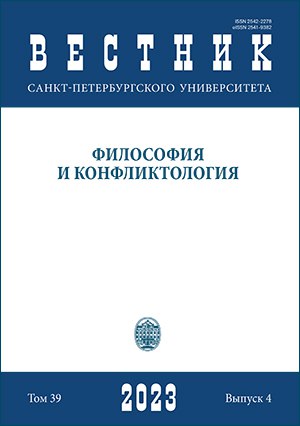Indian Concept of Sound: the “Universal Myth” in India and the West
DOI:
https://doi.org/10.21638/spbu17.2023.415Abstract
The Indian concept of sound became well-known in the West in the 1960s and was understood in a particular way. While many issues may be discussed regarding the Western interpretation of Indian sound, this study focuses on two specific elements: an assertion of the superiority of sound to vision and excessive emphasis on the “non-linguistic” nature of sound in Indian culture. In the West, emphasizing the aural dimension of Indian culture was linked with the opposition of sound to vision and, in some form, to language in its communicative and informative aspects. However, although sound is indeed an essential and exceptional part of Indian culture, it is opposed neither to sight nor to language within it. The difference between these two approaches led to the conclusion that the Western view of the Indian concept was a misinterpretation of indigenous ideas. Within this position, it was understood as an imperfect imitation of the original, with an unequivocally negative connotation. The authors attempt to go beyond such critique, overcoming the tendency to contrast things rather than to see their complicated interrelation. With this purpose, the question about the reasons for the difference between the two approaches is raised. The Indian concept of sound and its Western interpretation are treated as the two “universal myths,” each having a specific function in the corresponding culture. It becomes obvious that, in the social and cultural context of the counterculture era in the West, the Indian concept of sound was destined to fulfill the cultural demands of a host culture.
Keywords:
Indian culture, Indian music, sound studies, aural culture, ocularcentrism, counterculture, sound and sight, music and language, Nāda-Brahman
Downloads
References
References
Downloads
Published
How to Cite
Issue
Section
License
Articles of "Vestnik of Saint Petersburg University. Philosophy and Conflict Studies" are open access distributed under the terms of the License Agreement with Saint Petersburg State University, which permits to the authors unrestricted distribution and self-archiving free of charge.






